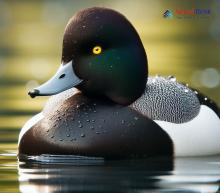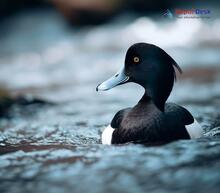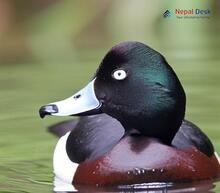Exploring the World of Aythya: A Journey Through Nepal's Biodiversity, Classification, Common Features, Evolutionary Relationships, and Nomenclature
Nestled amidst the Himalayas, Nepal is a treasure trove of biodiversity and a hub for various species of flora and fauna. Among the many fascinating creatures exhibiting evolutionary adaptations to their environment are the Aythya, a genus of diving ducks that call this region home. This SEO-friendly blog post delves into the world of Aythya, exploring their classification, common features, evolutionary relationships, and nomenclature to better understand their unique presence in Nepal's diverse ecosystems.
Classification and Nomenclature
Belonging to the family Anatidae and the order Anseriformes, the Aythya genus consists of twelve species of ducks that are widespread across various parts of the world. The term "Aythya" is derived from the Greek word "aithuia," which means "a diving seabird." This apt name showcases a key behavior observed in these ducks - their propensity to dive underwater for feeding purposes. One such species found in Nepal is the Ferruginous Duck (Aythya nyroca), which faces threats such as habitat loss due to human activities.
Common Features
Members of the Aythya genus are medium to large-sized ducks characterized by round bodies, short bills, and fairly long tails. They have powerful legs situated far back on their bodies, enabling them to dive and swim efficiently in search of food. Aythya ducks are known for their striking plumage colors - males usually possess shiny green or blue heads with contrasting white or chestnut bodies while females have brownish tones.
These diving ducks primarily feed on aquatic plants and invertebrates, using their specialized bills to filter through water and extract small prey items. Interestingly, Aythya ducks can dive up to several meters below the water surface while hunting.
Evolutionary Relationships
Aythya ducks' evolutionary lineage is closely linked to their relatives within the Anatidae family, which includes other species of freshwater diving ducks such as the members of the genera Netta and Aythyini. The relationships among these species are primarily determined by morphological similarities and in-depth genetic analysis, which work together in painting a clearer picture of their evolutionary history.
Research conducted on the divergence of these taxa using molecular data helps uncover the interconnectedness between different Aythya species and their relatives. Preserving the genetic diversity within Nepal's Aythya populations ensures the continued existence of these emblematic and ecologically significant waterfowl.
In conclusion, Nepal's biodiversity is a testament to the region's unique geological features and supports a vibrant ecosystem teeming with life. Among its inhabitants are the captivating Aythya ducks, whose common features, classification, evolutionary relationships, and nomenclature attest to their adaptability and resilience in various habitats. Further research into these fascinating creatures is vital for understanding their role within ecosystems, ensuring habitat preservation, and contributing to global efforts in biodiversity conservation.




